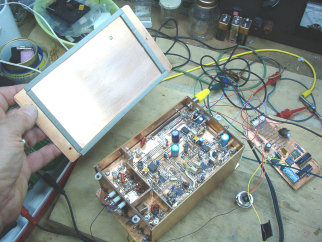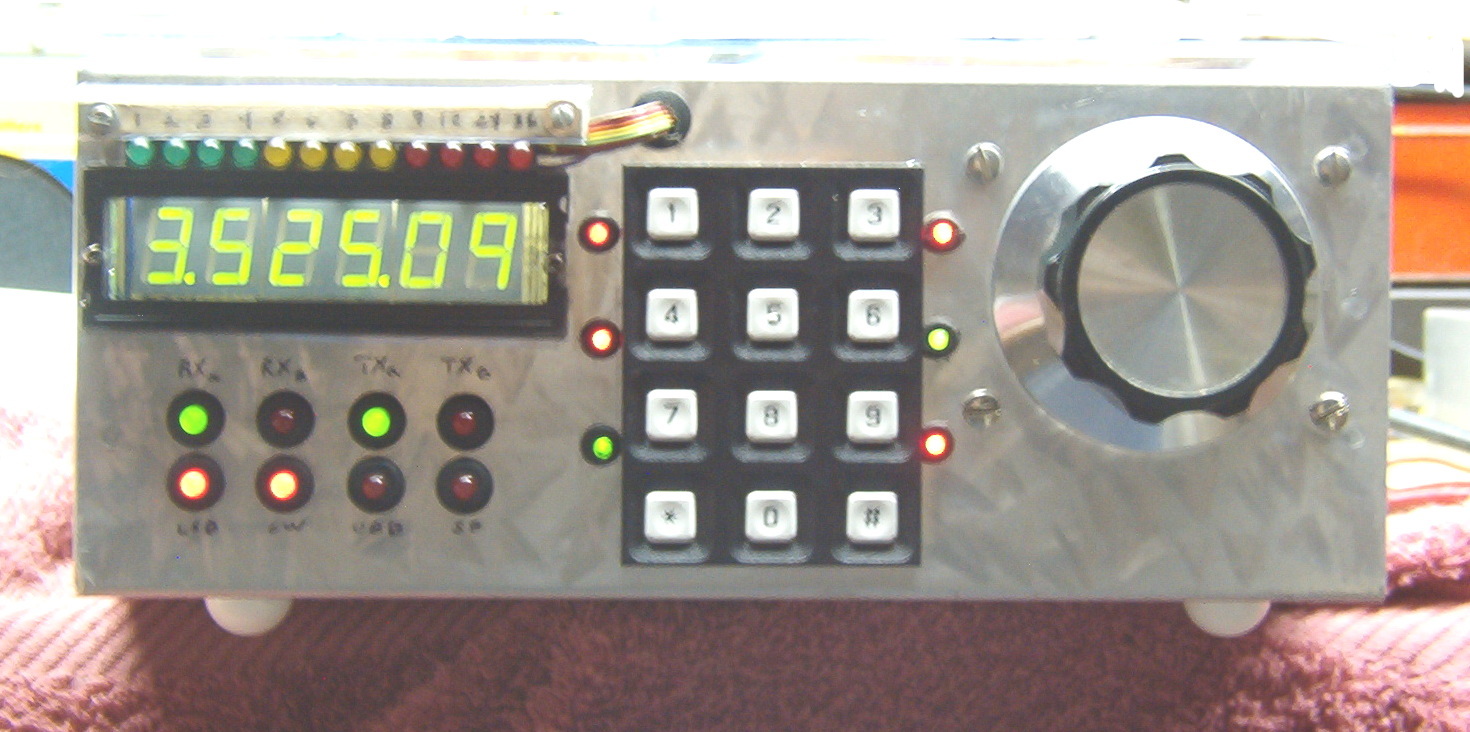The STAR operates on all bands from 160-M up through 10-M, on SSB and QSK CW. It isn't a typical SDR (software-defined radio). It doesn't require a PC (and sound card) for operation, although it can be controlled by a PC if so desired. The STAR works with CAT programs, too.
I usually operate my 10-band STAR in a stand-alone mode without a PC.
After looking over the original Rad Com articles (20 in all), I started construction in 2007. In my spare time, the transceiver took about 16 months to complete.
The heart of the rig is a PIC-controlled DDS (direct digital synthesizer) based on an Analog Devices AD9951 chip. The AD9951 is a 14-bit DAC output integrated circuit. The reference oscillator for the chip is a crystal-controlled and temperature-stabilized Butler oscillator. Alternatively, I clock my DDS with a Connor-Winfield 150-MHz module, courtesy of WA1FFL.
The DDS frequency is changed by means of a knob connected to a homebrew optical encoder. The encoder, in conjunction with the STAR's keypad, also permits changes to DSP settings and parameters. The DDS is mounted on a DIP plug-in to facilitate future upgrades. The module is shown below (left). The DSP sub-board (right) includes a boot loader in EPROM.


The IF amplifier strip (below) is entirely shielded. The DSP and CODEC board piggybacks under the IF board in the same enclosure. The top cover is sealed by means of conductive elastomeric strips (courtesy AA1SB).

The rig's mixer is an H-mode state-of-the-art switching design, originally developed by G3SBI, Colin Horrabin. In the STAR, a 4-transistor parallel JFET RF amplifier stage can be software-selected either ahead of the mixer or after it, for best noise-figure operation, or optimal IP3 third-order intercept.
`=`=`=`=`=`=`=`=`=`=`=`=`=`=`=`=`=`=`=`=`=`=`=`=`=`=`=`=`=`=`=`=`=`=`=`=`=`=`=`=`=`=`=`=`=`=`=`=`=`
Here's the chief op at AI2Q using the STAR at the bench.
The image below that shows the rig's minimalist front panel. The STAR is almost entirely self-optimizing, and the only knob is that of the rotary encoder. The homebrew encoder disk can be seen lower right. Settings and parameters are changed using the keypad.



Click here for a table of specs and features.
Click here to return to AI2Q home page.